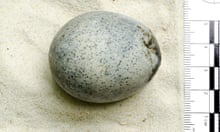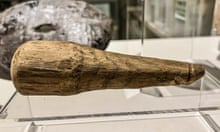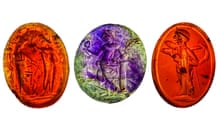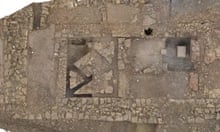A fragment from a Roman bottle so exceptionally rare that it has taken glass experts from around the world two years to conclusively identify it has been discovered thousands of miles from where it was made.
The discovery at Chedworth Roman Villa in Gloucestershire of the small shard of patterned green glass, part of an 1,800-year-old fish bottle, has astonished archaeologists.
Nothing like it has ever been found in Britain. It would have been made in an area around the Black Sea in what is now Ukraine and was possibly used to hold exotic perfume.
For it to travel all the way from the Black Sea to the Cotswolds sheds new light on the wealth and influence of the people who occupied Chedworth, a National Trust property regarded as one of the grandest Roman villas in Britain.
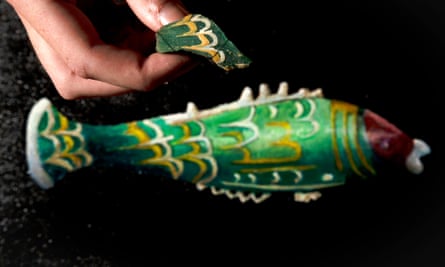
Nancy Grace, the National Trust archaeologist who led the work to investigate the find, said it had puzzled lots of people. “People have been enchanted by it, but it has also been a long and difficult journey,” she said. “To have found that it is the only one of its type so far discovered in Roman Britain adds to our knowledge of the importance of Chedworth Roman Villa.”
It is known that the villa was home to somebody of wealth and status. The fabulously exotic fish bottle from so far away “underlines that the occupants were in touch with the furthest regions of the Roman Empire and wanted to show off that influence. It is amazing that a small fragment has told us so much.”
The shard was found in the summer of 2017 but it has taken until now to identify the type of bottle is came from because of its rarity. It was sent to one of the leading experts in Roman glass, the late professor Jennifer Price, who in turn sought advice from other glass experts around the world.
The distinctive profile of the glass indicated it came from a long bottle with an oval shape and a sharp taper at the end. Price eventually found it matched a restored fish-shaped bottle in the collection of the Corning Museum of Glass in New York.
In an indication of its rarity, the only other example of a Roman fish bottle comes from a 2AD burial at Chersonesus in Crimea.
Price died in May but Grace said she could tell how much she was enjoying solving the mystery of the Chedworth glass shard. And she solved it, with her research published in the latest edition of the specialist newsletter, Glass News.

The fragment was found by Peter Moore, an archaeologist and masters student at the University of York who was helping with a dig at the villa. He said he would never forget the moment he found it, realising straight away it was something special.
“Knowing that you are the first person to gaze upon it for at least 1,800 years is a feeling that never tires,” he said. “Recovering such a unique find is incredibly humbling.”
The trust commissioned the archaeological illustrator Maggie Foottit to produce an impression of how the complete fish bottle may have looked.
The fragment is going on display at the villa from Tuesday as part of the villa’s festival of archaeology and will remain on display throughout the summer.

